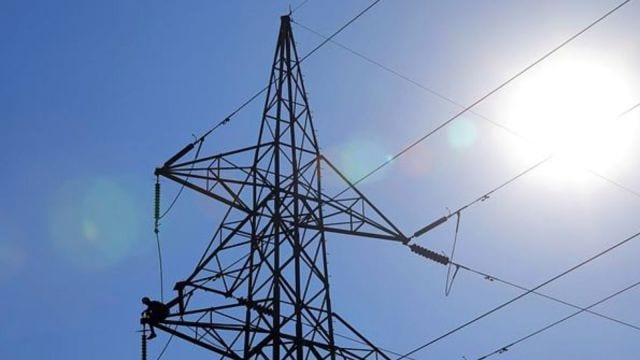India’s top grid operator has flagged May and June as “high-risk months” citing anticipated power shortages, warning that unmet electricity demand could reach 15-20 gigawatts (GW), particularly during non-solar hours. The National Load Despatch Centre (NLDC), in a new report, has recommended implementing demand-side measures, such as shifting electricity use to off-peak hours, to reduce stress on the grid during critical periods.
“May 2025 is the most critical month, followed by other high-demand summer months. The data suggests that system vulnerabilities are heightened during these periods, likely due to peak demands and potential variability in renewable generation,” the NLDC said in a report released in January. It also suggested invoking emergency powers under Section 11 of the Electricity Act, 2003 to require imported coal-based plants to run at higher capacities.

While solar generation helps meet peak demand during daylight hours, it falls short in the evenings and early mornings due to its intermittency. Meanwhile, India’s baseload power capacity – dominated by coal-based plants – has remained stagnant over the years, making it increasingly insufficient to meet rising demand in non-solar hours. As a result, the NLDC, under the Grid Controller of India Ltd, anticipates significant power shortages this summer, particularly in May and June.
In the best-case scenario, the loss of load probability (LOLP)– a measure of the likelihood that electricity demand will exceed supply – is estimated at 19 per cent for May. In the median scenario, the LOLP rises sharply to 31 per cent, meaning there is nearly a one-in-three chance that supply will fall short. For June, the probability of a shortfall ranges from 4.7 per cent in the best-case scenario to 20.1 per cent in the median scenario.
“Unserved energy is predominantly observed in May and July 2025, often exceeding 15 GW. Shortages are more likely to occur during non-solar hours in May, June, July, and August 2025. It could also be inferred that meeting maximum demand during solar hours is not an issue, as solar generation significantly contributes to supply adequacy during these periods,” the report said. The term ‘solar hours’ refers to specific time blocks determined weekly by the NLDC based on expected solar radiation, while ‘non-solar hours’ include all other time blocks of the same day. This summer, with peak demand projected at 270 GW, up from the 250GW last year, grid managers are learnt to be concerned.
Recognising the grid stability challenges posed by intermittent renewables, the Central Electricity Authority (CEA) issued an urgent advisory on February 18, calling for energy storage systems to be co-located with solar projects. Battery energy storage systems (BESS) and pumped storage plants (PSP) can store surplus solar power during the day and release it when demand surges outside daylight hours.
While the country’s total renewable energy capacity has crossed 200 GW, the installed energy storage capacity till end-2024 was just under 5 GW (4.75 GW of PSP and 0.11 GW of BESS).
Story continues below this ad
“The timely commissioning of BESS and PSP, as mentioned by CEA, is crucial to ensuring grid stability and managing peak demand efficiently. Any delays in their deployment could exacerbate energy shortages, particularly during high-demand months and non-solar hours. Ensuring these resources are available as planned will enhance system flexibility, support renewable integration, and mitigate reliability risks,” the NLDC report noted.
“The monthly LOLP and energy surplus trends indicate that certain periods, particularly in May, and June 2025, are high-risk months for shortages. The study suggests that demand-side measures, such as load shifting strategies and demand response mechanisms, could help alleviate system stress during these critical periods,” the report said.
“To mitigate supply shortages, directions under Section 11 of the Electricity Act for imported coal-based thermal stations should be considered. Given their higher generation costs, these stations are generally dispatched less frequently. However, during periods of system stress, their optimal utilization can play a crucial role in meeting peak demand,” it added.
The NLDC also suggested shifting planned outages of thermal plants from high-shortage months (April to July), when they are more frequent, to lower-demand months (November to January). Thermal plants play an indispensable role in providing baseload support to the grid during non-solar hours, especially in the absence of energy storage systems.
Story continues below this ad
However, the CEA’s latest advisory is too little, too late, with shortages expected to occur as soon as April. Last year too, protests against power cuts had spilled over onto the streets across parts of Uttar Pradesh, an increasingly rare event over much of the last decade, putting the focus back on the structural problems that could potentially short-circuit the country’s electricity sector.
Some policy missteps over the past decade are now coming home to roost. The Union Power Ministry’s National Electricity Plan (2017-22) had effectively ruled out fresh thermal capacity additions beyond 2022, apart from the 50 GW of under-construction projects. The plan’s focus was almost entirely on scaling up renewables. Additionally, imported coal-based projects were actively discouraged, primarily in the wake of spiralling global coal prices.
In January, The Indian Express had reported that multiple under-construction thermal plants were facing delays due to theft and fire, slow civil works, and raw material shortages.
Since the planning misstep of 2016-17, some corrective measures have been taken – a renewed push for nuclear generation in fleet mode, a belated drive to add large thermal capacities, importing coal to restart idle plants, and policy shifts such as the latest CEA directive mandating storage for all new solar projects.
Story continues below this ad
In December 2023, just ahead of COP28, the Union Power Ministry, in a review meeting, decided to ramp up coal-based generation by at least 80 GW by 2031-32—broadly aligning with the National Electricity Plan (2022-27). However, private sector interest in thermal generation remains difficult to revive, and nuclear capacity expansion continues at a glacial pace.


































